The history of nightlife is a fascinating journey spanning thousands of years, revealing how nighttime entertainment has evolved across civilizations.When the Sun Goes Down, History Comes Alive
Nightlife has a story that stretches back thousands of years, long before the first disco ball ever spun or the first DJ dropped a beat. When we think about going out at night, we often picture crowded dance floors filled with young people, but the truth is far more interesting. Throughout human history, people of all ages have gathered after dark to socialize, celebrate, and connect with their communities in ways that daylight simply doesn’t allow.
Understanding where nightlife comes from, the history of Nightlife, helps us appreciate where it’s going. The traditions we see in modern bars, clubs, and entertainment venues didn’t appear out of nowhere. They evolved from centuries of human behavior, cultural exchanges, and the universal human need to come together when work is done and the moon is high.
The Roots of Nightlife in Ancient Times
The history of nightlife reveals patterns that repeat across civilizations and continents. From the moment humans discovered they could extend their social activities beyond daylight hours, they began creating spaces and rituals for evening entertainment. This journey through the history of nightlife begins in the ancient world, where the foundations of modern going-out culture were first established.
ANCIENT ROOTS: The First Night Owls
The concept of nightlife predates recorded history. Archaeological evidence suggests that ancient civilizations had their own versions of after-hours entertainment. As far as we know, the history of nightlife can be dated back to the Ancient Greek Civilization.
In Ancient Rome: Taverns as Social Hubs
In ancient Rome, taverns called “thermopolia” (from Greek, literally “hot drinks”) remained open late into the evening, serving wine and food to citizens looking to unwind after a long day’s work.[1] In 1920, during recent excavations in the Regio V area of Pompeii, archaeologists discovered an extraordinarily well-preserved thermopolium with fascinating evidence of Roman daily life.[2]
These establishments were far more than simple drinking spots; they were social hubs where people from different walks of life could mingle, share news, and form connections.[1] Asellina’s thermopolium in Pompeii, one of the most complete surviving examples, featured intact jugs, dishes, and even a water pitcher on the ground floor where people ate and drank, with stairs leading to guest rooms on the second floor.[3]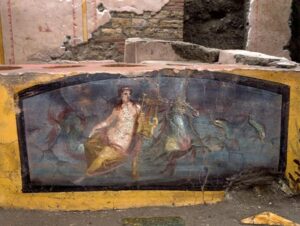
Recent archaeological discoveries have revealed that approximately 40% of working-class homes and 66% of middle-class homes in the Vesuvian area lacked a hearth for cooking, meaning ordinary citizens depended on these establishments for sustenance.[4] Food fragments preserved inside include pork, goat, fish, duck, and land snails, providing insights into the variety of dishes served.[2]
In Ancient Greece: The Symposium as Cultural Cornerstone
Ancient Greece took nighttime entertainment seriously. The symposium (from Greek συμπόσιον, “drinking together”), a drinking party that typically began after sunset, was a cornerstone of Greek social life. These were private gatherings in homes, attended by men of high status, though some symposiums included courtesans (hetairai) for entertainment and company.[5]
These were not wild parties in the modern sense, but rather sophisticated gatherings where men drank wine, engaged in philosophical discussions, enjoyed music and poetry, and debated the issues of the day.[5] The symposium was so important to Greek culture that it influenced art, literature, and social customs for generations.[5][6] Participants reclined on couches (klinai) arranged around the room, creating an intimate and relaxed atmosphere for conversation and entertainment.[5]
The symposium served as a forum for the exchange of ideas and the development of philosophical and political thought in ancient Greece.[5] Notable philosophers, such as Socrates and Plato, often used the symposium as the setting for their dialogues and discussions,[5] highlighting its importance in Greek intellectual life.
Taverns and Alehouses: The Medieval Social Hubs
In medieval Europe, public houses and taverns became central to community life. These establishments served as far more than simple drinking spots. They were places where travelers could find lodging, where merchants could conduct business, and where locals could gather to hear news from distant places. The tradition of the pub as a community gathering place has roots stretching back over a thousand years, and many of the customs we see in modern bars can be traced directly to these medieval establishments.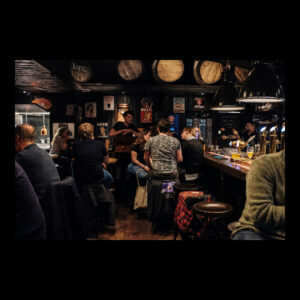
The Birth of Modern Nightlife: The 18th and 19th Centuries
As centuries passed, the history of nightlife continued to evolve beyond simple taverns and drinking establishments. The next major chapter in this story would see nighttime socializing transform into something more intellectual and democratized, setting the stage for the sophisticated entertainment venues we know today.
The 18th and 19th centuries saw a transformation in nightlife culture. Coffee houses emerged in Europe, becoming intellectual hubs where philosophers and artists gathered. The Industrial Revolution brought new wealth and leisure time, allowing the middle class to enjoy nightlife as never before. Dance halls, theaters, and concert halls multiplied in major cities.
THE COFFEE HOUSE REVOLUTION: Nightlife Gets Sophisticated
The 17th and 18th centuries saw the rise of coffee houses across Europe and the Middle East. While coffee houses operated during the day, many remained open late into the evening and became important centers of intellectual and social life. In cities like London, Paris, and Vienna, coffee houses became known as “penny universities” because for the price of a cup of coffee, anyone could sit for hours and engage in stimulating conversation with writers, artists, politicians, and thinkers.
These establishments helped democratize nightlife in many ways. Unlike exclusive clubs or expensive taverns, coffee houses were relatively affordable and open to a broader segment of society. They became places where ideas were exchanged, business deals were made, and social movements were born. The coffee house culture of this era laid the groundwork for many aspects of modern nightlife, including the concept of the social venue as a place for both entertainment and intellectual engagement.
The history of nightlife took a dramatic turn in the late 19th century, shifting from intellectual coffee house discussions to spectacular theatrical performances. This new era would introduce elements of showmanship, art, and entertainment that forever changed what it meant to go out at night.
THE GOLDEN AGE OF CABARETS AND JAZZ CLUBS
The Moulin Rouge and Paris Cabarets (1889 onwards)
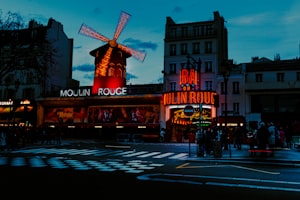
The late 19th and early 20th centuries brought dramatic changes to nightlife culture. The rise of cabarets in Paris, particularly in the Montmartre district, created a new kind of nighttime entertainment that combined music, dance, and theatrical performance.
The Moulin Rouge, founded on October 6, 1889 by Joseph Oller and Charles Zidler, revolutionized Parisian entertainment.[7][8] Its founders wanted to create a place dedicated to entertainment for a diverse audience, and the fact that it was located in Paris’s 18th district (a fashionable but still rather rural area at the time) allowed the cabaret to quickly acquire a solid reputation.[8]
What truly distinguished the Moulin Rouge was the “can-can,” a provocative and energetic dance that soon became synonymous with cabaret. The Moulin Rouge was the birthplace of the modern can-can, which was both thrilling and scandalous at the time.[7] Iconic dancers like La Goulue became legends in their own right, their high kicks and contagious energy drawing crowds from across Paris.[7]
As the Moulin Rouge grew in popularity, it transformed from a lively dance hall into a vibrant artistic hub. The artist most iconically associated with the venue, Henri de Toulouse-Lautrec, captured the energy of the cabaret with his famous posters featuring La Goulue and other dancers, spreading the image of the Moulin Rouge throughout Europe.[7]
The Roaring Twenties and Speakeasies
The 1920s marked a turning point in nightlife history. During Prohibition in the United States (1920-1933), speakeasies – illegal bars hidden behind unmarked doors – became the epicenter of social rebellion and creativity. Jazz music filled the air, flappers danced the Charleston, and nightlife became synonymous with freedom and defiance against authority.
The Jazz Age in the United States (1920s)
Meanwhile, in the United States, the Jazz Age of the 1920s transformed nightlife forever. With the advent of Prohibition on January 16, 1920, alcohol sales were forbidden, but the demand for drinks remained. Thousands of illegal bars, or speakeasies, soon opened their doors.[11]
Prohibition forced the closure of tens of thousands of saloons across the country, but the demand for drinks remained constant, leading to the proliferation of these hidden bars.[9] By mid-1920s, New York City had more than 32,000 speakeasies.[9] In some restaurants, waiters sold drinks from hip flasks, while in others “small blacks” — straight liquor in demitasses with mixers on the side — were served.[10]
Although jazz music predated Prohibition, the new federal law limiting liquor advanced jazz’s future by creating a culture of underground nightclubs at the national level throughout the 1920s.[11] This competitive club environment saw mobsters like Al and Ralph Capone of Chicago and Owney Madden of New York competing for the best performers for their drink-hungry clientele.[11]
Initially, speakeasy owners offered live music from bands tied to vaudeville acts. But jazz was a better fit for the party mood of the era. Bar owners soon hired small jazz bands with local musicians to provide background or dance music.[11]
Jazz clubs in cities like New Orleans, Chicago, and New York became hotbeds of musical innovation and cultural mixing. These venues brought together people of different etnicities and backgrounds at a time when American society was largely segregated.[9] The speakeasy culture during Prohibition added an element of excitement and rebellion to going out at night, creating an underground nightlife scene that valued creativity and community.[9]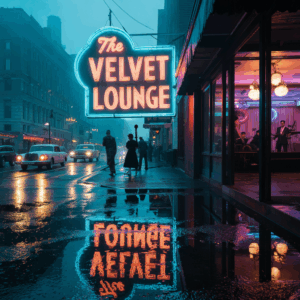
What made this era particularly significant was how it established nightlife as an art form. Musicians like Louis Armstrong, Duke Ellington, and Billie Holiday turned nightclubs into concert halls where genuine artistic innovation happened.[12] The tradition of the nightclub as a place to experience live music and discover new talent has its roots in this golden age.[11]
The Cotton Club and the Complexity of the Harlem Renaissance
While the Cotton Club is famous for launching the careers of legendary musicians who embodied the Jazz Age, its legacy is complicated by racial segregation.[13] The Cotton Club had a strict whites-only policy and explicitly banned Black customers.[13] Colorism among performers kept dark-skinned male comedians and dancers out, while chorus girls and singers were light-skinned.[13]
All performance at the Cotton Club was Black, allowing the club to claim a veneer of representation and cultural authenticity, but this actually masked discriminatory practice. Meanwhile, other venues like Smalls’ Paradise, the Lafayette Theatre, Connie’s Inn, and the Savoy Ballroom attracted Black audiences for their revues, comedy shows, and concerts.[13]
The Golden Age: Disco, Clubs, and the Modern Era
The disco era of the 1970s revolutionized nightlife. Studio 54 in New York became the most famous nightclub in the world, representing the epitome of glamour and excess. Disco culture embraced diversity, bringing together people of different etnicities, sexual orientations, and social classes on the dance floor – a radical concept at the time.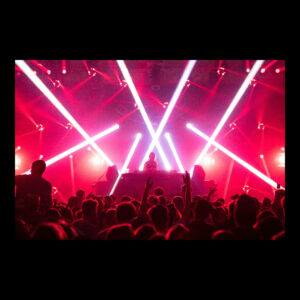
By the mid-20th century, the history of nightlife had already witnessed remarkable transformations, but the most revolutionary changes were still to come. The post-war era would see nightlife democratize in unprecedented ways, breaking down social barriers and creating new forms of expression on the dance floor.
DISCO, PUNK, AND THE DEMOCRATIZATION OF DANCE
Studio 54 and the Disco Era
The 1970s brought another revolution to nightlife with the rise of disco culture. Discotheques became temples of dance where DJs, rather than live bands, became the stars of the show. Clubs like Studio 54 in New York became legendary for their celebrity clientele and extravagant parties.
Studio 54 opened on April 26, 1977, right as disco was gaining popularity in the United States.[14][16] Infamous for its celebrity guest lists, outrageous entrance policies, lavish events, and rampant drug use, Studio 54 closed in 1980 after Schrager and Rubell were convicted of tax evasion.[14]
The club’s interior was a visual and sensory marvel. Sets and lighting displays were carefully choreographed to provide visitors with a dreamlike experience. One of the club’s most iconic installations was a large “man in the moon” hanging over the dance floor, with a spoon rising to its nose in a somewhat cheeky nod to the drug culture of the era.[15]
In November 1977, Dan Dorfman of New York magazine quoted Rubell as saying “only the Mafia made more money” than Studio 54, which made $7 million in its first year.[14] The club’s opening strategy had been to mix the rich and poor, gays and straights, old and young — a fusion that created an intoxicating alchemy on the dance floor.[15]
In 1979, Schrager and Rubell were charged with tax evasion, when federal agents found bags of money and drugs hidden in the ceiling and back rooms of the club.[17] Despite attempts to keep the club open during their absence, Studio 54 never fully recovered. In 1980, the doors of Studio 54 closed, marking the end of an era.[17]
Yet disco culture had deeper meaning. For many marginalized communities, particularly LGBTQ+ people and people of color, disco clubs had become safe spaces where they could freely express themselves.
The history of nightlife continued its evolution as the 1980s approached. Each previous era had added new elements to the nightlife experience, and the emerging rave culture would take these innovations to entirely new territories, literally and figuratively moving the party outside traditional venues.
The Rise of Electronic Dance Music and Rave Culture
The 1980s and 1990s witnessed the explosion of electronic dance music (EDM) and rave culture. Massive warehouse parties and festivals became legendary. This era democratized nightlife, making clubbing accessible to the working class and creating a global community united by music and dance.
RAVE CULTURE AND ELECTRONIC MUSIC: A New Dawn
The late 1980s and early 1990s saw the birth of rave culture in the UK and Europe. These all-night dance parties, often held in warehouses or outdoor locations, were powered by electronic music genres like house, techno, and trance. Rave culture represented a new kind of nightlife that rejected traditional venues in favor of temporary, often secret locations.
What made rave culture particularly interesting was its emphasis on community and shared experience. The phrase “PLUR” – Peace, Love, Unity, Respect – became a mantra for many ravers. These events attracted people from all walks of life and all age groups, united by their love of electronic music and the unique atmosphere of all-night dancing.
As rave culture moved from underground warehouses to legitimate clubs and festivals, it transformed the entire nightlife industry. The rise of superstar DJs turned electronic music into a global phenomenon, and the technologies developed for raves influenced everything from club sound systems to lighting design.
The Commodification of Nightlife in the 21st Century
In the 21st century, nightlife has undergone a dramatic shift that reflects broader changes in urban economies and consumer behavior. Where once underground clubs and independent venues challenged social norms and fostered unique cultural identities, today’s nightlife is increasingly shaped by corporate interests, branding, and commercial imperatives.
Mainstream entertainment districts and professionally managed nightclubs have proliferated, optimizing locations for market potential, accessibility, and profitability. The result is a highly aestheticized and consumer-driven landscape, where venues are designed to maximize customer engagement and create visually compelling, “Instagrammable” experiences that drive both presence and profit.
This commodification is visible in several key trends. Nightlife venues now offer curated, immersive experiences—ranging from themed nights, art installations, and celebrity DJ residencies to VIP services and exclusive events—all crafted to appeal to targeted demographics and encourage repeat business.
Social media and digital marketing fuel demand for shareable moments, further blurring the line between authentic connection and staged spectacle.
Technology has also enabled widespread innovation: online reservations, ticketing platforms, and AI-powered customer analytics help operators tailor offerings and streamline operations, transforming nightlife into a sophisticated business ecosystem driven by data and user preferences.
Yet, this commercial transformation has a double edge. While the professionalization of nightlife ensures safer, more inclusive spaces and generates substantial economic activity, it can also dilute the countercultural spirit and sense of community that once defined night-time social life.
As venues compete to offer the most distinctive experiences, marginalized and alternative scenes may be pushed aside by homogenized mass-market offerings.
Sustainability and responsibility are also rising priorities, with operators adopting eco-friendly practices and diversifying entertainment options—reflecting new societal values and responding to consumer demands for ethical engagement.
Ultimately, the commodification of nightlife in the 21st century highlights the tension between genuine social interaction and commercial spectacle, between diversity and mainstreaming, and between economic opportunity and cultural integrity. As nightlife continues to evolve, balancing these forces will be key to preserving both its vibrancy and its soul.
The Impact of Technology on Modern Nightlife
Technology has radically transformed the modern nightlife experience, profoundly impacting both the way venues operate and how patrons engage with entertainment spaces. Clubs and bars now leverage immersive audio-visual systems, including LED screens, projection mapping, and holographic displays, to create environments that react dynamically to music and crowd movement, turning the space itself into a sensory spectacle. Advanced lighting and visuals not only deepen the atmosphere but encourage longer, more memorable engagement with guests.
Interactivity is at the heart of these changes. Wearable tech, motion-sensing dance floors, and AR (augmented reality) overlays let partygoers become active participants rather than passive spectators. This means social walls, live digital posts, and app-based song requests are now standard features in innovative venues, increasing personalization and boosting the sense of connection among attendees.
Behind the scenes, digital innovation optimizes club operations through AI-powered crowd management, personalized marketing, and data analytics that allow owners to tailor offerings according to visitor preferences.
Cashless payment systems (using mobile, RFID, or contactless cards), smart security cameras, and digital reservations streamline logistics and improve safety, while mobile applications provide customers with loyalty rewards, exclusive promotions, and fast access to services.
Virtual reality lounges and metaverse parties are emerging as hybrid experiences, blending physical and digital dimensions. These innovations let users explore new social possibilities and participate in events regardless of their location, promising greater accessibility and inclusiveness.
From multi-sensory technology—such as synchronized scent diffusers and haptic floors—to eco-friendly facility management, the integration of technology continues to push nightlife beyond traditional boundaries.
Overall, the digital transformation of nightlife enhances convenience, amplifies creativity, and redefines the possibilities for social connection, making every night out not only safer and more seamless but also increasingly tailored to individual tastes and desires
The history of nightlife isn’t just a Western story. Around the world, different cultures have developed unique nighttime traditions that have enriched the global nightlife landscape. These diverse customs remind us that the desire to socialize after dark is truly universal.
CULTURAL TRADITIONS THAT SHAPED MODERN NIGHTLIFE
Different cultures have contributed unique traditions to the global nightlife landscape. The Spanish custom of “la marcha” (going out late, often not starting until midnight) has influenced nightlife timing in many Mediterranean countries. The Italian tradition of the “passeggiata” (an evening stroll through town, stopping at various cafes and bars) combines social walking with nighttime socialization.
In Japan, the izakaya culture of after-work drinking and dining has created a distinct nightlife scene focused on food, drinks, and colleague bonding. These establishments range from tiny standing bars to larger restaurant-style venues, but they all serve the same purpose: providing a space for people to relax and connect after the workday ends.
Latin American countries have contributed vibrant dance traditions to global nightlife. From salsa clubs in Cuba to tango halls in Argentina, these venues preserve traditional dance forms while creating spaces where multiple generations come together to dance and socialize. It’s common to see grandparents dancing alongside their grandchildren in many Latin American nightlife venues.
The British pub culture, with its emphasis on conversation, community, and quality beer, has been exported around the world. The tradition of the “local” – a neighborhood pub where regulars gather nightly – represents a form of nightlife that’s more about consistent community than occasional excitement.
CURIOSITIES AND LESSER-KNOWN FACTS ABOUT NIGHTLIFE HISTORY
The history of nightlife is full of fascinating details that most people don’t know. For instance, the cocktail was likely invented in the early 19th century, and the elaborate cocktail culture we see today has roots in the pre-Prohibition era when bartenders competed to create the most impressive drinks.
The term “nightclub” itself didn’t become common until the early 20th century. Before that, these venues were called everything from “supper clubs” to “dance halls” to “cabarets.” The modern nightclub, with its emphasis on DJs, dance floors, and late-night hours, is a relatively recent invention.
Many iconic nightlife innovations happened by accident. The disco ball was originally developed in the 1920s and was called a “mirror ball.” It didn’t become associated with disco until the 1970s, when lighting designers realized it created the perfect atmosphere for dance floors.
The “velvet rope” concept – the idea of making a venue exclusive by having a doorman select who gets in – was popularized by Studio 54 in the 1970s. This controversial practice created immense demand for certain clubs but also sparked debates about exclusivity and discrimination in nightlife that continue today.
THE EVOLUTION CONTINUES
Today’s nightlife is more diverse and inclusive than ever before. The rise of the internet and social media has changed how people discover venues and events. Apps and websites allow people to find exactly the kind of nightlife experience they’re looking for, whether that’s a quiet wine bar, an energetic dance club, or a live music venue.
The COVID-19 pandemic forced a temporary pause in nightlife worldwide, but it also accelerated certain trends. Virtual events, outdoor venues, and hybrid experiences that combine in-person and online elements are now part of the nightlife landscape. The industry has shown remarkable resilience and adaptability.
What hasn’t changed is the fundamental human need that nightlife serves: the desire to connect with others, to celebrate, to be entertained, and to create memories when the workday is done. Whether you’re 25 or 65, whether you prefer quiet conversation or loud music, nightlife has something to offer.
Nightlife is for Everyone!
One common misconception is that nightlife is exclusively for young people. In reality, age demographics at nightlife venues have diversified significantly. Senior citizens participate in dance clubs, millennials host sophisticated cocktail parties, and multi-generational groups enjoy nightlife together. The history of nightlife demonstrates that the desire for community, entertainment, and social connection transcends age boundaries. Nightlife in the 21st century is increasingly inclusive and accessible to all age groups.
The rich history of nightlife shows us that going out after dark has always been about more than just age or fashion. It’s about human connection, cultural expression, and the simple pleasure of enjoying life outside the constraints of daily routine. From ancient Roman taverns to modern electronic music festivals, the core appeal remains the same.
As we look to the future of nightlife, it’s clear that the industry will continue to evolve. New technologies, changing social norms, and diverse demographic trends will shape what going out looks like in the decades to come. But the fundamental appeal of gathering with others when the sun goes down will remain constant.
So the next time someone suggests that nightlife is just for young people, remember the thousands of years of history that prove otherwise. Nightlife is for anyone who wants to experience the magic that happens when the day ends and the night begins.
SOURCES AND REFERENCES
[1] MaidaInProject.com - Thermopolium (2021)
[2] ArcheoTravelers.com - A new thermopolium resurfaces entirely in Pompeii (n.d.)
[3] Wikipedia - Thermopolium (2008)
[4] AtlasObscura.com - Pompeii Thermopolium (2021)
[5] IEEE The Symposium and Greek Social Life (2024)
[6] Wikipedia - Symposium (2004)
[7] Cabaret-Paris.com - Moulin Rouge History: From 1889 Cabaret to Paris (2025)
[8] ParisByEmy.com - The Moulin Rouge - The most famous cabaret (2025)
[9] JazzObserver.com - Speakeasies 1920s: A Fascinating Journey Through Jazz (2025)
[10] Historic New Orleans Collection - "The Liquor Capital of America" (2018)
[11] Prohibition.TheMobMuseum.org - The Rise of Jazz and Jukeboxes (2024)
[12] Wikipedia - Harlem Renaissance (2003)
[13] Curationist.org - A Tale of Two Harlems: The Legacy of Jazz and Racism at… (2022)
[14] Wikipedia - Studio 54 (2004)
[15] UtterlyInteresting.com - The History of Studio 54: A 1970s Disco Palace (2025)
[16] BBC.com - Studio 54: 'The best party of your life' (2012)
[17] Pmamagazine.org - Disco and Debauchery: A Night at Studio 54 (2024)

